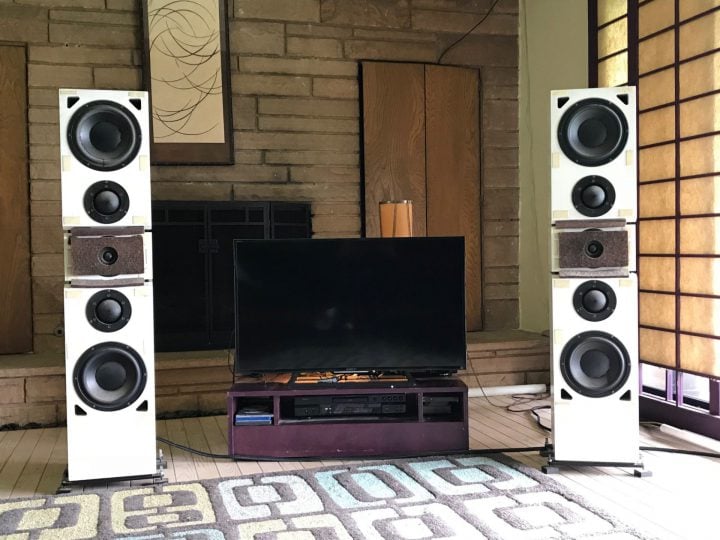About half a year ago, in Copper #45, I wrote a bit about my system, and the seemingly neurotic doubts it aroused in me.
Well, OK — not seemingly. I wouldn’t be a true audiophile if I didn’t experience the periodic, gnawing urge to somehow make it better. But I do remember a time when I was incredibly satisfied with the system. It was a few years ago, when things were a little different at my house. The changes are not for the better, sonically. For one thing, I had the speakers farther out in the room, and we only had one couch. Where I sit was, and could be, much closer to the speakers. Let’s just say that the battle over wife-approval-factors has been utterly lost in this house. But the good news is, five minutes of moving furniture and speakers and things are, more-or-less, back in that old position.
It’s a very odd room — “mid-century modern” (to quote somebody else’s expression), built in 1959, with three walls of dissimilar materials –– stone, plaster and glass; and made doubly so by our insistence on its main function — the view — we won’t compromise it. So I can’t use the more-or-less obvious axis for the speakers: facing in from the large, floor-to-ceiling window. My solution was copped from Dan Meinwald — put everything at an angle. And it works pretty well.
The preamp then was a pure tube EAR G88, Tim deParavicini’s former top of the line; the turntable, Allen Perkins’ great Immedia RPM-2 with matching tone-arm. And no matter what music I played on the system, analogue or digital, it sounded exceptional.
That was the best that I had; that equipment, in that position. Holographic is one way to describe it: the speakers well and truly vanished. But things change; children grow up to be cowboys, etc. Nonetheless, I remember it. And I’m thinking of doing something kind of drastic to get back to it.What I hear — tinnitus aside — isn’t a lack of treble information, it’s a lack of transparency.
So the question I’ll put to any readers of this column is:
Have you ever re-soldered your speakers?
That’s what I’m thinking about doing. The woofers have been redone several times, as they’ve needed re-foaming over their 22+ years. But the midrange domes and the tweeters haven’t, and the crossovers, most definitely not.
Inspired (or irritatingly egged-on, depending on your take) by a recent “Paul’s Post” about doing a spring-cleaning, I’m thinking of going all the way. It sounds like an enormous pain in the tuches, and I’d have to be extremely careful to not mess with the dressing of the absorptive material in the cabinet, so I’d like to know, before I do it, if any readers tried it and had success with doing it. The mid-drivers and the tweeters don’t seem so scary, but the crossovers… yikes.

The speakers are a d’Appolito configuration pair made by my pal Richard Marsh, using Dynaudio drivers and his own crossover components. He had built a pair for himself, I heard them and asked him if he’d consider building another pair. Part of his reasoning, he said, was to see whether or not he could improve on his pair by the internal dressing. He reported that he succeeded with mine, and so went back to redo his pair.
Just about anything can and everything does oxidize, for better and worse. So…
Anybody tried it?
[Ye Uncharitable Editor immediately responded: It’s the caps, stupid! You’ll see a piece on the upgrade of my Spica Angelus crossovers soon.–-Ed.]



